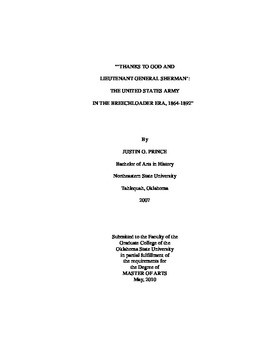| dc.description.abstract | This study examines the United States Army and its procurement and employment of small arms and machine-guns from the American Civil War and the Danish War of 1864 through the adoption of the Krag-Jorgensen smokeless rifle in 1892. The method of the study is to examine the United States Army's actions of the time not in the light of the Indian Wars, which is common, but to look upon the force as a contemporary of European armies. The goal is to compare the actions of the United States with those of Britain, France, Prussia/Germany, Italy, Russia, Switzerland, Austria, and Holland. As officers in the American Army keenly examined developments in Europe, the study attempts to discover how the army reacted to those developments and how the military compared with the traditional European powers of the era. When compared with the armies of Europe, the evidence demonstrates that the United States Army's firearms procurement during the years between 1864 and 1884 was not conservative. It began testing a breechloader system before many nations in Europe, and was the first nation to adopt Gatling guns. The fact that officers did not understand how to employ the weapons is not conservatism, as most European nations did not understand how to employ them either. The United States, during this period, also examined magazine rifles, procured numerous machine-guns, and sought to improve the rifle that it adopted. Furthermore, the army continually tested new rifles and often compared the weapons it used with those employed by European armies. Only after magazine rifles became standard issue in Europe, starting in 1884, and after the adoption of smokeless powder in France in 1886, did the United States Army become conservative. Much of this change was due to continued affection for the Springfield rifle as well as Chief of Ordnance Stephen V. Bent who continued army indecisiveness towards choosing a standard weapon, but abandoned the concept of issuing trials pieces in large numbers. | |
